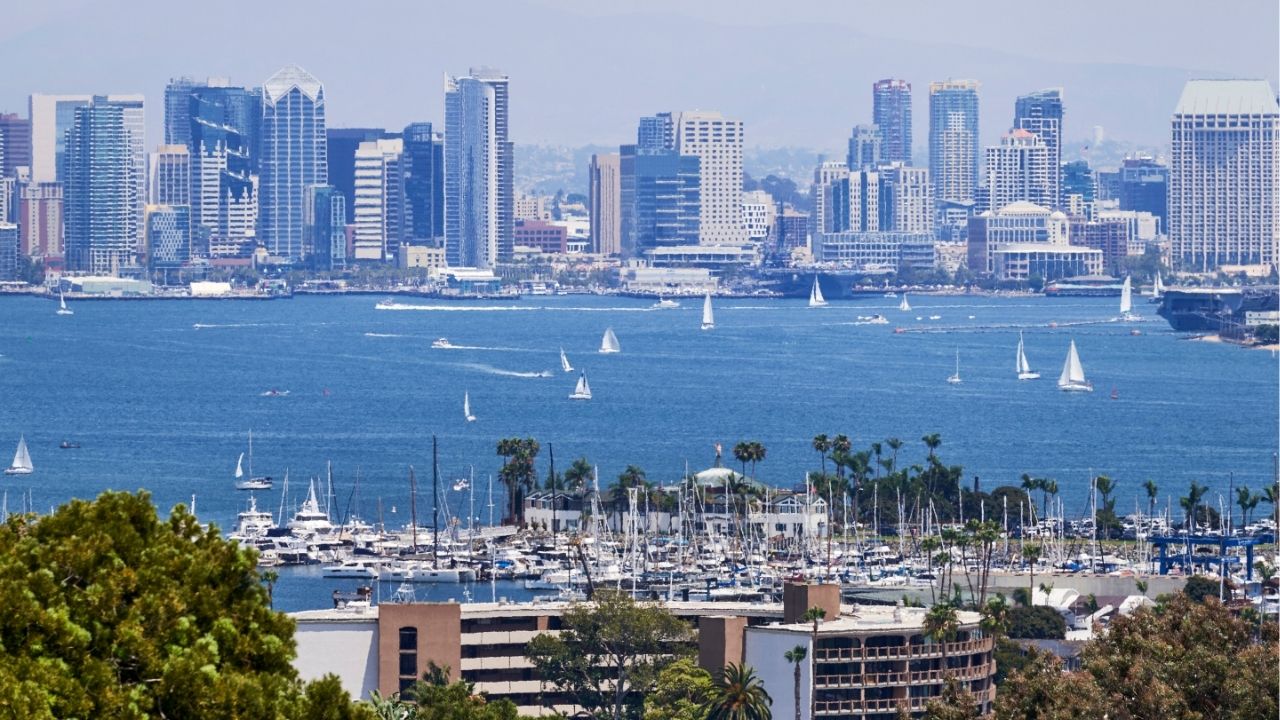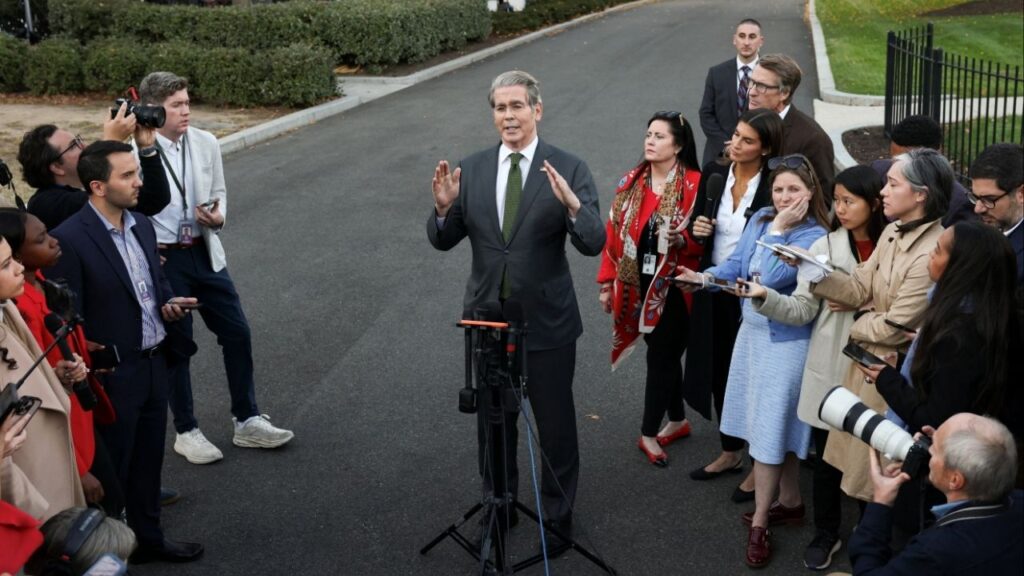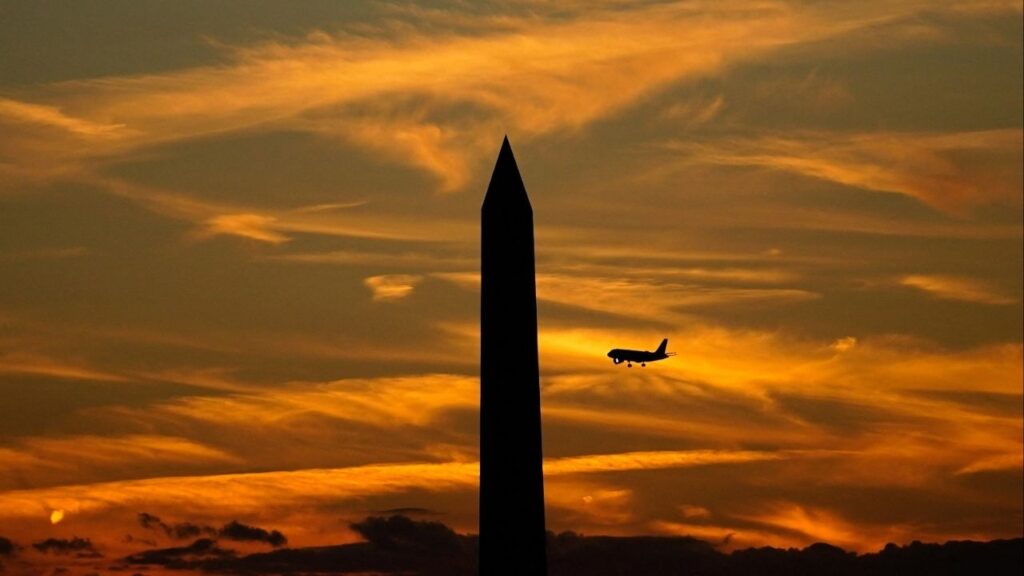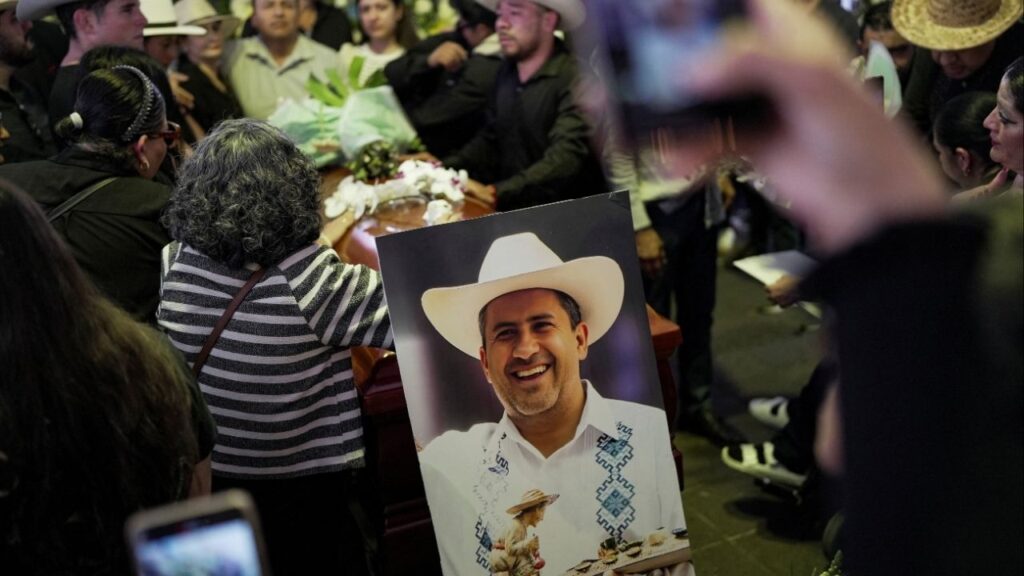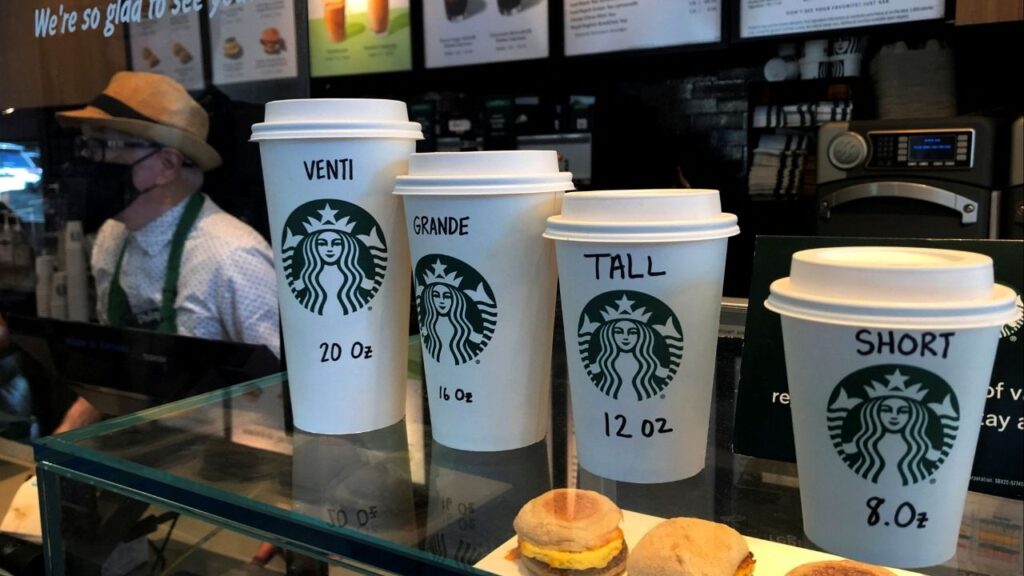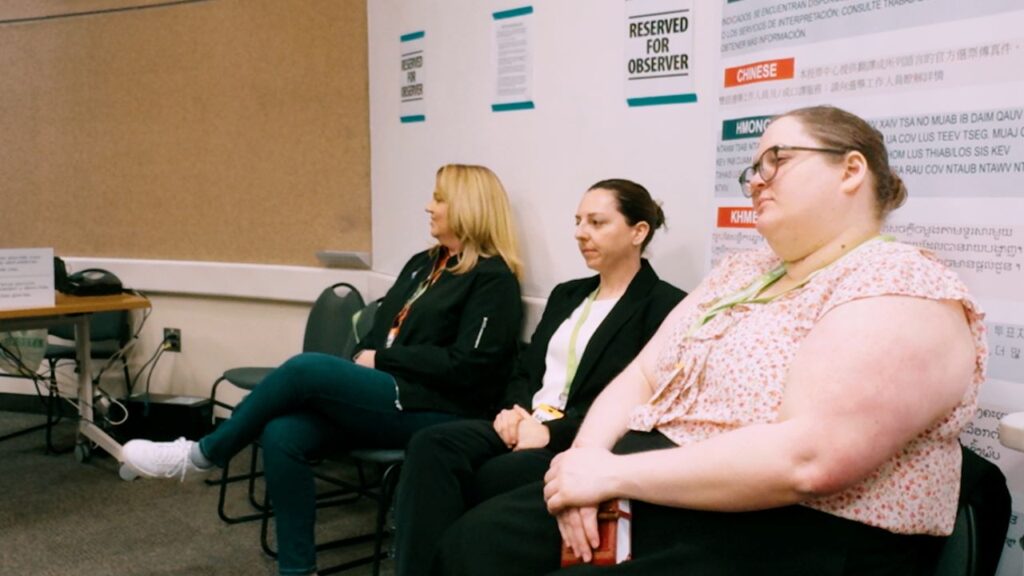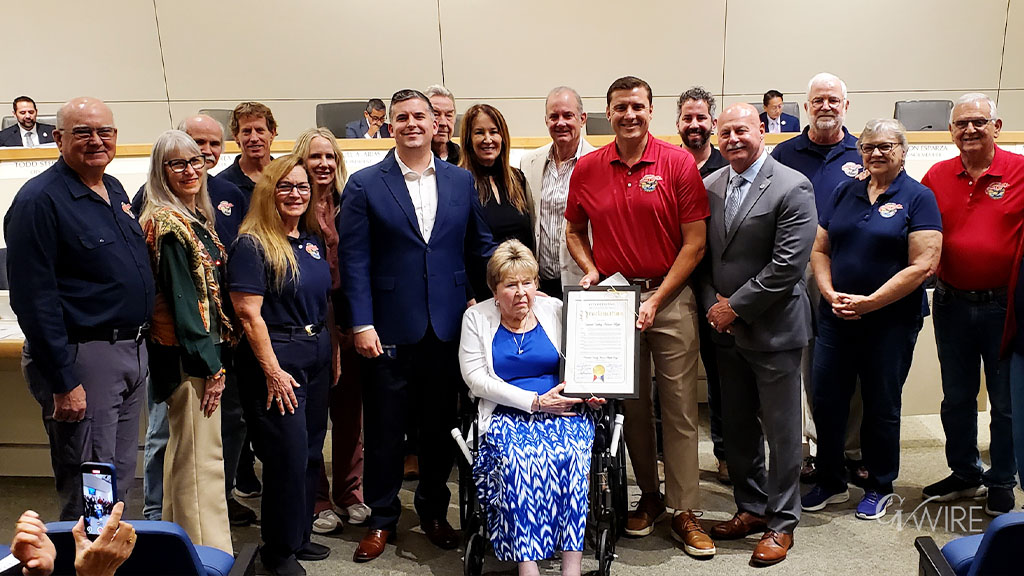A view of downtown San Diego, July 13, 2024. California is among the U.S. destinations that are ramping up marketing efforts to reassure international tourists that they are welcome. (John Francis Peters/The New York Times)

- International tourists are reconsidering U.S. travel, citing hostile policies, trade wars, and safety concerns under the Trump administration.
- Canadian travel to the U.S. dropped 24% after Trump’s tariffs, impacting airlines and small tourism businesses.
- European travelers cancel U.S. trips due to high costs, visa delays, and concerns over Trump’s environmental and immigration policies.
Share
|
Getting your Trinity Audio player ready...
|
International tourists detained at U.S. borders. Steep tariffs imposed on trade partners. Threats against longtime allies.
The onslaught of contested policies and language by the Trump administration in recent weeks is causing tourists around the globe to either cancel or reconsider travel to the United States. A growing number of visitors say they feel unwelcome or unsafe and are reluctant to support the economy of a country that some foreign officials say is waging trade wars and destabilizing its allies. A draft of a new travel ban circulating through the administration could restrict citizens from up to 43 countries, including Belarus, Cambodia and St. Lucia, from entering the United States.
“So many Americans are looking to escape the tense and toxic atmosphere at home. Why would anyone want to visit, especially right now with all the arbitrary detentions at immigration?” said Mallory Henderson, 53, a marketing consultant in London who usually visits the United States twice a year, but canceled a trip to visit her brother and niece in Boston this Easter.
“It’s a really hostile and scary time, and quite frankly, there’s plenty of other inviting and pleasant places I can go to meet up with my family,” she said.
Even before the change in administration in January, the U.S. travel industry was struggling to recover from the pandemic, mainly because of the strength of the dollar, which makes it more expensive for foreign travelers to visit, and long visa wait times. Inbound international visitor numbers were not expected to reach 2019 levels until later this year and foreign visitor spending is not projected to fully recover until 2026, according to the U.S. Travel Association.
But those expectations may now be even harder to reach, travel experts say.
The research firm Tourism Economics had originally forecast travel to the United States to grow by 9% this year, but in February, it updated its outlook, expecting inbound travel to decline by 5.1% and hotel demand to decline by 0.8% in 2025 — the equivalent of an $18 billion drop in spending. Much of the decline is the result of a boycott by Canadian travelers. In February, after President Donald Trump announced tariffs on Canada, the number of Canadians driving across the border fell by 24% compared with the same period in 2024.
Airlines are responding to the uncertainty. Some, including Delta Air Lines and American Airlines, cut their financial forecasts for the first few months of the year, citing softness in travel spending. Scott Kirby, the CEO of United Airlines, said the carrier had reduced the frequency of numerous routes to Canada because of a “big drop in Canadian traffic” into the United States.
“The negative sentiment shift is anticipated to be sustained by an evolving mix of Trump administration factors, including geopolitical friction on trade and national security policies, charged rhetoric and adversarial posturing,” said Adam Sacks, the president of Tourism Economics.
‘It Does Not Feel Right’
Travel operators in Europe have not yet reported large waves of cancellations on the scale of Canada, where many residents are boycotting travel to the United States, but a growing number of travelers are rethinking their spring and summer plans. Eric Dresin, the secretary-general of the European Travel Agents’ and Tour Operators’ Associations, said “turbulent times” are expected, particularly if more countries are affected by U.S. policy changes.
Arrivals into the United States from Western Europe fell by 1% in February after increasing by 14% the same period last year, according to preliminary data from the U.S. National Travel and Tourism Office.
Christoph Bartel, 28, a German citizen who lives in Norway, had planned a trip to Arizona this summer to visit national parks. He canceled his plans last week in response to the Trump administration’s firing of national park employees and reversal of environmental regulations.
“It does not feel right to support the American economy when the president is causing so much sabotage,” Bartel said. “It is disappointing to abandon a special trip we planned for months, but we will go to Canada or Mexico instead.”
After Canada and Mexico, Britain supplies the largest number of visitors to the United States, with nearly 4 million last year. Travel agencies are seeing a split among those clients who frequently visit the United States and are not being deterred by the political climate, and those who are looking for alternative destinations in response to the policy changes.
The sheer expense of visiting the United States in the wake of the pandemic also appears to be taking a toll.
“America was always thought of as a really good value,” said Alan Wilson, the managing director of Bon Voyage Travel & Tours, a British company specializing in trips to the United States and Canada. Along with the strength of the dollar, prices of hotels have also been going up, and steep tips are a problem for many visitors.
“The British market absolutely hates the 20% tipping culture and how America always has its hand held out for the next gratuity,” he said. “They would rather pay the money up front.”
The Crunch Is Hurting
In places like New York, Florida and California, the crunch is being felt by small travel businesses, which were optimistic that 2025 would bring growth. Luke Miller, the owner of the family-run company Real New York Tours, said his business was being decimated after droves of mainly Canadian visitors canceled following Trump’s announcement on tariffs.
“I just had 20 busloads of seniors cancel their upcoming tours. That’s thousands of dollars of losses for my small business,” Miller said, adding that he is receiving cancellations as far out as the winter holiday season and has no bookings from Europeans this summer, his second biggest market after Canada. He called the situation “heart-wrenching.”
Major destinations like New York and California are ramping up marketing efforts to reassure international tourists that they are welcome. Visit California, the state’s tourism agency, revised its overall projections for 2025 visitor spending this month to $160 billion from $166 billion, after the slowdown in the growth of international travelers and the devastating wildfires in Los Angeles in January.
“The good news is, thanks to California’s strong brand on the global stage, international visitors continue to show a strong affinity for the Golden State,” Caroline Beteta, the agency’s president, said in a statement.
New York has had similar messaging. Addressing the expense of visiting the city, Julie Coker, the president of New York City Tourism+ Conventions, said it was possible to visit on a budget, and the marketing organization would highlight those opportunities.
“This is an excellent opportunity to highlight the other boroughs and parts of New York City outside of Manhattan that are just as vibrant and have amazing, award-winning culinary, arts and cultural experiences,” she said, adding that New York had faced obstacles before and is confident that it will be able to reach its goal of recovering international spending by 2026 despite the current challenges.
Miller of Real New York Tours is not convinced. He said that if bookings did not pick up this summer, he would have to consider laying off staff.
“The reality is that we are being hit the hardest and might not survive,” he said.
—
This article originally appeared in The New York Times.
By Ceylan Yeğinsu/John Francis Peters
c. 2025 The New York Times Company



